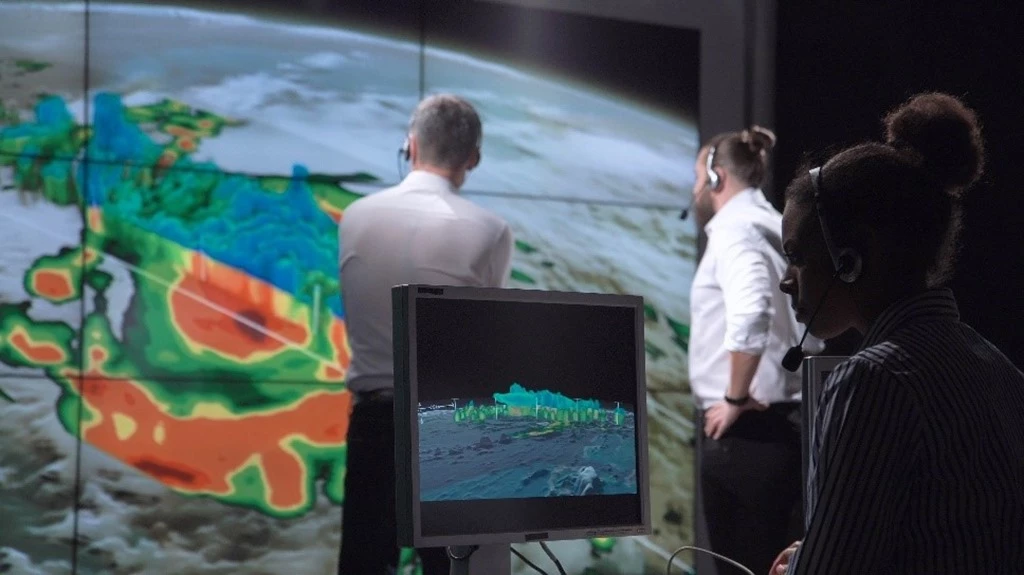Azure HPC Cache, Storage, Thought leadership
Farming from space: How orbital data is unlocking novel agriculture insights
Posted on
4 min read

High-performance computing (HPC) and orbital data deliver unprecedented insights into weather patterns, improving planning, forecasting, and decision-making, in an ever-evolving agriculture supply chain.
Consequently, global food security may be one of the defining challenges of the coming decades. By 2050, The World Bank estimates that global food production will have to rise by a staggering 70 percent to feed the growing global population.
Although population growth in several Western countries is slowing down or declining, many emerging markets are experiencing exponential growth in their populations.
By the turn of the century, it is expected that many of the most populated cities in the world will be located across Africa—with Lagos, Nigeria leading the pack with an estimated population of 88.3 million by 2100. The African continent will also play a leading role in global food security, with 60 percent of the world’s uncultivated arable land situated in Africa.

Agriculture is also a major job creator in emerging economies such as in Africa. An estimated 80 percent of farmland in Africa and Asia is managed by smallholder farmers, who in turn produce up to 80 percent of the food supply in sub-Saharan Africa and Asia. It is also not only agriculture that will generate and drive employment in Africa over the next decades, but also the respective businesses that support the agriculture industry, such as processing, packaging, logistics, financial services, and security, that will be able to add to the growing number of jobs in the sector, especially in rural areas.
Many smallholder farmers operate without the benefit of accurate weather data, which can undermine crop yields, lead to crop losses, and negatively impact regional and global food security. Innovation by Microsoft and industry partners powered by Azure HPC is set to change this, at scale.
The Agri-industry adapts to climate change
A newly established collaboration between Microsoft and Tomorrow.io, a global leader in weather and climate security, will support businesses, governments, and farmers across Africa in adapting to the growing impact of climate change.
Announced at the recently concluded COP27, the collaboration will provide near real-time data from a global multi-sensor satellite constellation with an AI-powered, high-resolution global weather model that will be deployed to Azure HPC.
This follows calls from United Nations (UN) Secretary-General António Guterres, who noted that high-quality weather forecasts, early warning systems, and climate information are “essential to improve protection and build resilience.” Secretary-General Guterres further added that the UN has set an ambitious target of deploying a global, extreme weather, and climate change alert system within five years.
More than five billion people lack access to reliable and actionable weather information, the bulk of which reside in Africa and Asia. Improving smallholder farmers’ access to accurate weather data can reduce the risks of reduced yields and diminishing crop viability. In addition, it can also improve access to crop insurance, a vital step in agricultural industry development.

Tomorrow.io and Microsoft’s collaboration will enable access to localized, high-resolution weather forecasting models, and will focus primarily on supporting climate-resilient farming and helping smallholder farmers optimize their yield productivity.
Not only will this collaboration with African government agencies empower existing meteorological agencies to deliver weather intelligence, early warnings for severe weather, and state-of-the-art climate information, but it will also increase local farmers’ ability to become more resilient in the face of extreme weather events, thus increasing the protection of the food production chain across the continent.
Powering weather research and forecasting to scale
Applying HPC capabilities to weather prediction can also aid responses to major storms which may help prevent catastrophic agricultural losses, as one ground-breaking project shows.
When the Category 5 storm Hurricane Maria struck the Caribbean in 2017, the National Centre for Atmospheric Research leveraged the power of Azure HPC to develop a one-kilometer resolution model of the storm with 371 million grid points. Powered by Azure HBv2 VMs featuring AMD’s EPYCTM 7002 series processors, the researchers were able to scale the model to over 80,000 processes while maintaining 70 percent efficiency—more than double the performance of a supercomputer that ranks among the top 20 globally.
The Azure HBv2 VMs offer supercomputer performance and MPI scalability while still driving cost efficiencies for a variety of real-world HPC workloads. Each Azure HBv2 VM sports 120 AMD EPYCTM CPU cores and 480GB of memory that power applications in computational fluid dynamics, explicit finite element analysis, seismic processing, reservoir modeling, and weather simulation.

This reduces time to forecast by rapidly delivering actionable weather predictions, improving agility, and providing high-fidelity simulations of atmospheric conditions through physics and data assimilation.
For governments, businesses, and smallholder farmers that seek to safeguard the global food supply, access to accurate weather data powered by Azure HPC and AMD could be a game-changer. Uncertainty would become obsolete. Risks due to severe weather could be more optimally mitigated. And losses could be better protected. This is evident from a recent survey of farmers in the southern districts of India, where more than 70 percent of them misjudged the onset of the monsoon season and had to replant their crops.
With improved access to data, farmers and decision-makers can improve their response to weather events and ensure maximum crop yields, thereby building greater resilience and ensuring maximum crop yields.
Find out more about Azure HPC
- To request a demo, contact HPCdemo@microsoft.com.
- Learn more about Azure HPC + AI.
- High-performance computing documentation.